Legal Highs in Spain
v1.1 - Aug 15, 2011
Translation of report given at a Jul 13, 2011 press conference held in Barcelona, Spain
Citation: Energy Control. "Legal Highs in Spain". Erowid.org. Aug 15, 2011. Erowid.org/psychoactives/research_chems/research_chems_article3.shtml.
In July 2011, The Association for Welfare and Development (ABD) and Energy Control held a press conference on "legal highs" in Spain. Núria Calzada, Coordinator of Energy Control, presented this report on conclusions and recommendations drawn from the analysis of "legal high" samples received by Energy Control beginning in late 2010.
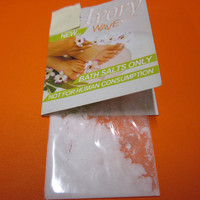
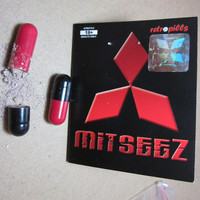
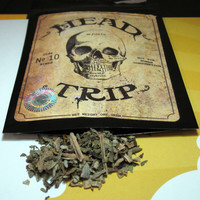
|
Legal Highs: What are they?
Legal Highs are psychoactive chemical compounds, some very potent both in intensity as well as duration.Main characteristics:
- Generally they are sold online as bath salts, bong cleaners, incenses, fertilizers or collector's items.
- The composition of the substances is never written on the labels or on the supplier website, and neither is there any dosage information, precautions or contraindications.
- They always include a warning that it is not for human consumption. In this way, health and safety controls are avoided.
- Nevertheless, contradicting the "not for human consumption" statement, they also include the warning that the is only for people over 18 and some even warn about keeping them away from children's reach.
- Not controlled (in principle).
- The overall majority of the detected compounds are new substances that have not yet been tested in humans and therefore their adverse and/or toxic effects in the short and long term are unknown.
- It is a growing phenomenon.
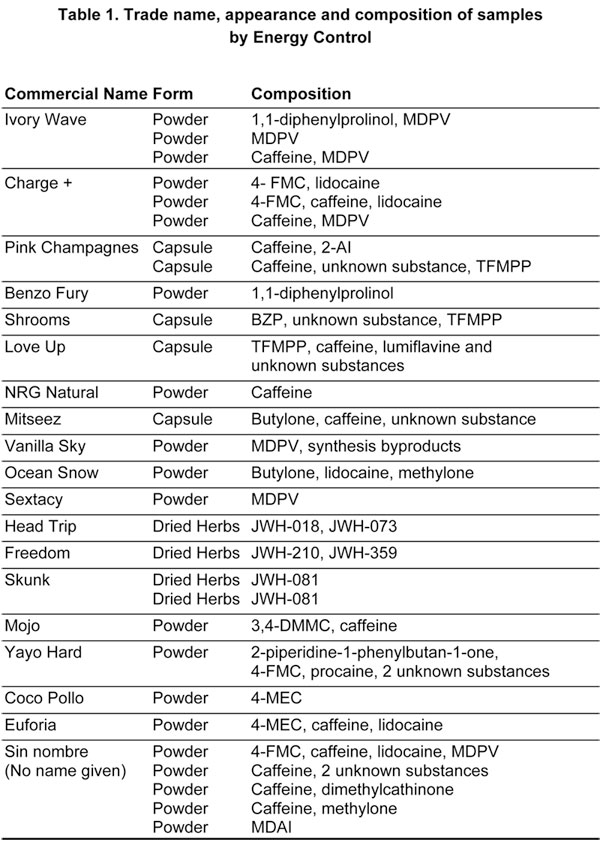
|
Results
At the end of 2010, the analysis service ABD-Energy Control began receiving "legal high" samples from different parts of the Spanish territory (where Energy Control is located).28 samples were analyzed with thin layer chromatography (TLC), gas chromatography-mass spectrometry (GC / MS) and resonance nuclear magnetic resonance (NMR): 21 different compounds were identified and 8 unknown substances were detected, highlighting the need for further investigating chemical structures.
- Presentation in the form of powder (71%) is an attempt to imitate stimulants such as speed or cocaine. The addition of local anesthetics (lidocaine, procaine) tries to emulate the numbing effect felt in the mouth or nasal cavities produced by cocaine hydrochloride.
75% of these samples contained some substance in the cathinone family (butylone, methylone, MDPV...). - Presentation in capsule form (14%) or pills (4%) attempts to imitate ecstasy and other drugs consumed orally in recreational environments. Similarly to products in powder form, there are often mixtures of several substances.
Most of these samples contained substances belonging to the piperazine family (stimulant, empathogen and/or hallucinogen effects, depending on dosage and the mix of substances present). - Presentation in the form of dried herbs (11%), herbal incenses, tries to imitate cannabis. The herbs are impregnated with potent synthetic cannabinoids. In general they result in more potent and longer lasting effects than cannabis itself. Also it was observed that there are more adverse effects and even some medical emergencies after the administration of these products.
All of the samples analyzed contained one or several of the synthetic cannabinoids of the JWH group (018, 073, 081, 210, 359).
| IMPORTANT: |
|
Recommendations for Users
Not knowing which product is being consumed is a potential source of problems. The serious adverse effects being reported are deeply related to this lack of knowledge and might have been avoided with previous informational work and research.
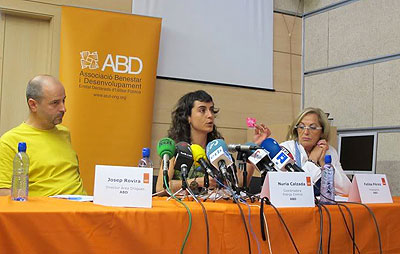
|
- Analyze before consuming (always remembering that the same brand is no guarantee about the chemical composition).
- Increase precautions taken and be prudent when consuming these products.
- The fact that its called "legal" may mislead some users into thinking it is a product with guarantees and no risks.
- There have been products sold as "legal high" that contained controlled products. Therefore, there are legal risks for users.
- The "Legal Highs" are advertised as legal alternatives to controlled drugs, which can mislead users into adopting a similar usage pattern. Dosages, safety margins and effects are different and thus we recommend obtaining as much information to reduce risks, both for "Legal Highs" as well as for other controlled drugs.
Recommendations for Institutions / Governments
- Necessity to monitor and follow the evolution of such products.
- The rapid emergence of these types of compounds in the market challenges the detection and analysis systems, due to the difficulty in identifying some of these compounds. Therefore investments are necessary in the effort to understand the chemical structures of the compounds that appear on the market.
- Parallel to this, it is necessary to investigate different aspects of these substances: dosages, desired effects, secondary effects, toxicity and risks, contraindications, etc. It is of vital importance to know the pharmacological properties of these substances in order to correctly inform users.
- Control through laws as the sole measure to approach this phenomenon is inefficient. The case of 4-methylmethcathinone (mephedrone, controlled in Spain since march 2011) or of the synthetic cannabinoids has shown the very small impact that these kind of measures have, either because they continue being sold or because they are replaced by other substances. As such, we invite governments and institutions to get to know and debate alternative measures.
- Our proposal is that these substances are included in a new category that allows their purchase with regulated health and safety controls so that users can obtain a product with guarantees and information, and in parallel that they are researched.
Conclusion
Energy Control considers that the use of substances about which there is little or no scientific data in humans can be especially dangerous to one's health. Drugs such as cocaine or cannabis have been consumed and studied over centuries and practically everything is known about them, which allows us to inform consumers about forms of ingestion and dosing, diminishing risks and possible interactions or contraindications. More research and a special care is required with "legal highs".
- A 29th sample was included in the table above. For more details about legal high samples tested by Energy Control, see ecstasydata.org/results.
- For further information (in Spanish) please see energycontrol.org or abd-ong.org on the web, and @EC_es, @Abd_ong and #Legalhighs on Twitter.
Photo Credits #

